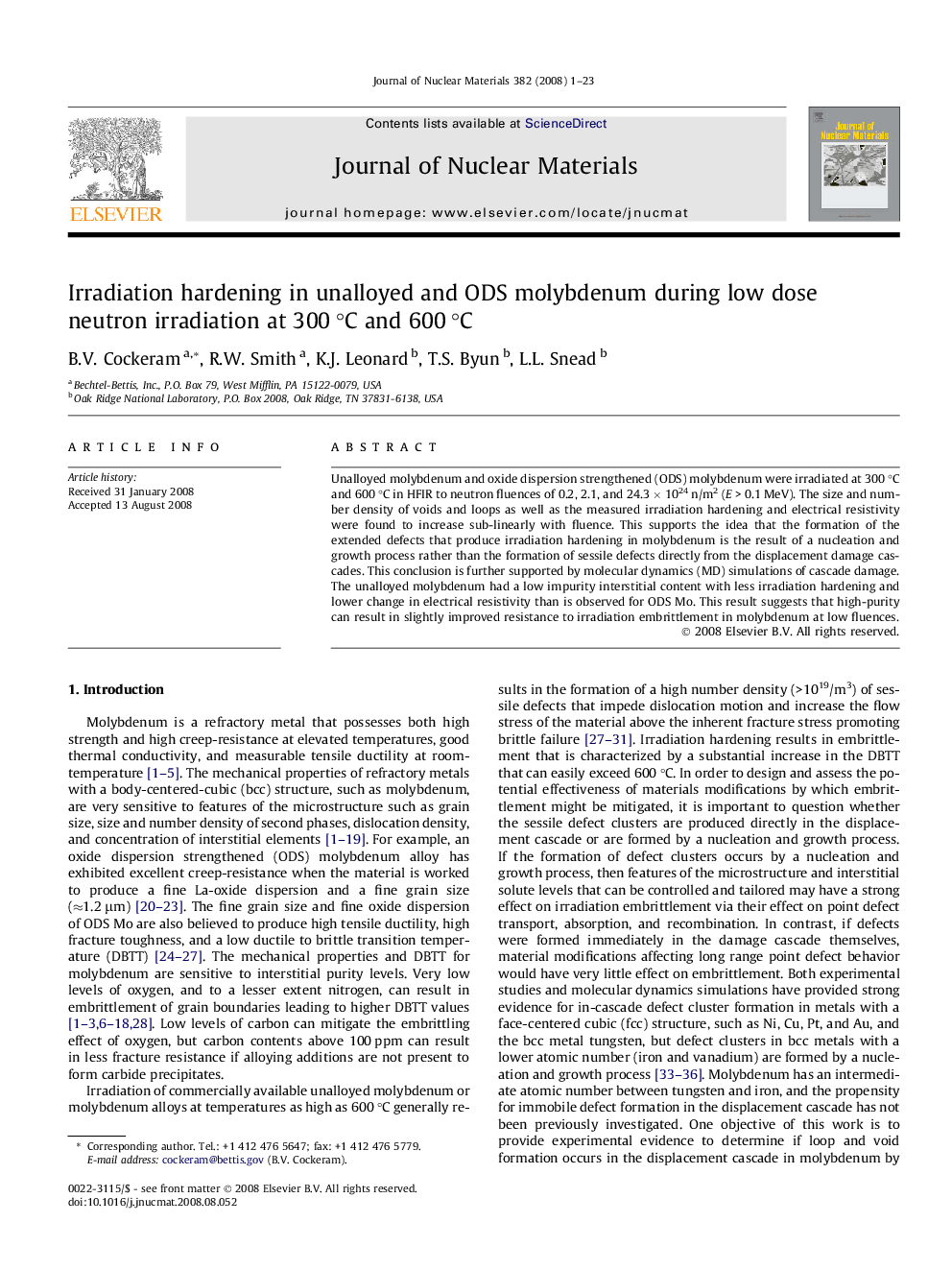| Article ID | Journal | Published Year | Pages | File Type |
|---|---|---|---|---|
| 1568388 | Journal of Nuclear Materials | 2008 | 23 Pages |
Unalloyed molybdenum and oxide dispersion strengthened (ODS) molybdenum were irradiated at 300 °C and 600 °C in HFIR to neutron fluences of 0.2, 2.1, and 24.3 × 1024 n/m2 (E > 0.1 MeV). The size and number density of voids and loops as well as the measured irradiation hardening and electrical resistivity were found to increase sub-linearly with fluence. This supports the idea that the formation of the extended defects that produce irradiation hardening in molybdenum is the result of a nucleation and growth process rather than the formation of sessile defects directly from the displacement damage cascades. This conclusion is further supported by molecular dynamics (MD) simulations of cascade damage. The unalloyed molybdenum had a low impurity interstitial content with less irradiation hardening and lower change in electrical resistivity than is observed for ODS Mo. This result suggests that high-purity can result in slightly improved resistance to irradiation embrittlement in molybdenum at low fluences.
